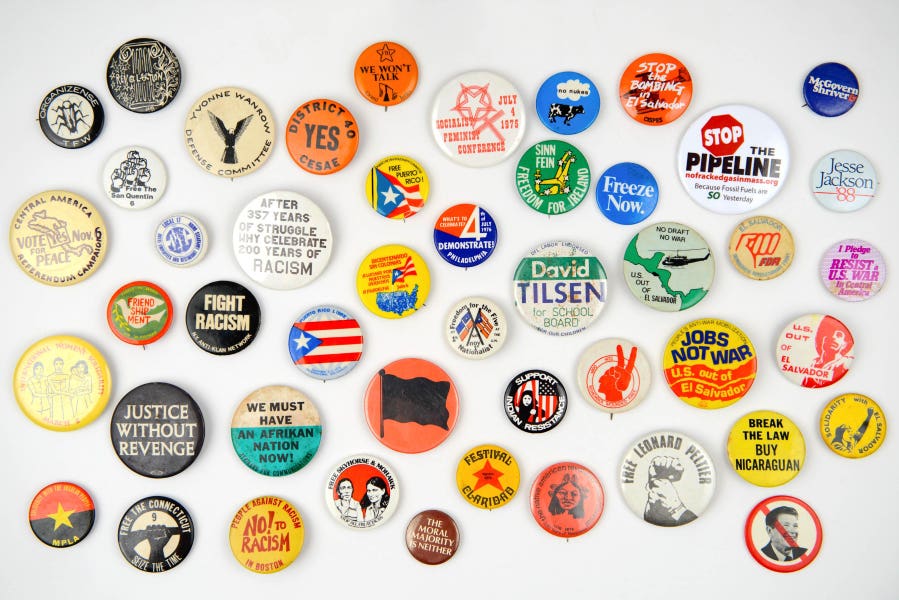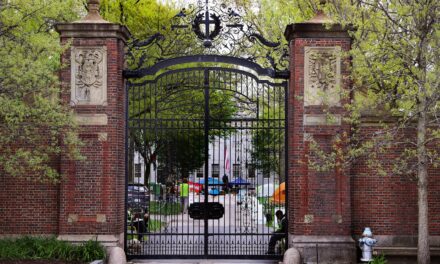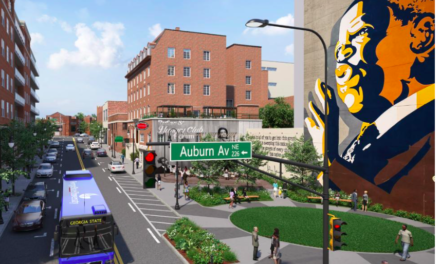
Buttons from causes my parents supported and participated in. From the book and exhibition “Hard Times are Fighting Times.”
Alice Proujansky
Jed Proujansky and Joan Deely are real ones.
The Guerilla Girls are in the hall of fame.
Shirley Chisholm went in on the first ballot.
Activists.
Progressives.
“Radicals,” using the pejorative term affixed to anyone around the world working to take power from the historically privileged, white, male, monied, ruling class.
Across New York, exhibitions highlighting the work of activists, from the mostly unknown to the iconic, offer hope, inspiration, and instructionfor progressives despairing another Trump presidency and regression of humanity.
Jed Proujansky and Joan Deely fell in love helping organize a 60,000-person counter rally to U.S. Bicentennial celebrations in 1976. Deely turned on to activism through anti-war protests. She was terrified of her older brothers being sent to die in Vietnam. Proujansky was introduced to movement work by a cousin who taught at a Freedom School in 1964. That summer, Black and white activists from around the country went to Mississippi and set up schools for African American kids, teaching while highlighting to the nation how Black kids there were denied any semblance of an equitable public education compared to white kids.
Both were working for Native American rights organizations when they became acquainted. A match made in progressive heaven.
Three years later, a daughter was born: Alice.
Her childhood in western Massachusetts, and that of her siblings, was spent attending marches and rallies. Karl Marx was quoted on the kitchen pantry. A bumper sticker on the family car read: “I’d rather be smashing imperialism.”
In Alice Proujansky’s baby book, on a page titled “Mother’s and Father’s Ambitions for Baby,” Jed Proujansky wrote, “to grow up and be anything you want, except a fascist or a banker.”
“The first page of my baby book, it’s dedicated to a family who was most likely killed by the FBI for being part of (American Indian Movement) work; that’s a heavy thing,” Proujansky told Forbes.com. “You can’t even get born around here before you’re supposed to shoulder this burden.”
The burden of activism Alice Proujansky was born into.
“My (childhood) softball team marched in a parade, and they gave us each a flag and I dragged mine on the ground,” Proujansky remembers. “My coach was so angry, but I knew what my parents would expect; they thought it was awesome.”
That burden and her parent’s activism and archive of family life–including pages from the baby book–are lovingly shared by Alice Proujansky in a 2023 book and exhibition now on view at Baxter Street at the Camera Club of New York through February 26, 2025, both titled “Hard Times are Fighting Times.” The name references a 1976 labor movement conference Jed Proujansky helped organize.
“It makes you very anxious, because as a little kid, you’re inundated with–I had to understand Palestine and the AIDS crisis. I understand what my parents were trying to do, and I love and respect them, and I agree with their political analysis most of the time, but there’s another part of it that’s about familial expectation,” Proujansky said. “I want this project to have a lot of entry points. Some people might love the graphic design of the 70s. Some people might be trying to figure out their own Left politics. Other people might think about the expectations that are put on them, and how do you grapple with that? How much do you carry forward.”
All objects in the book and exhibition–photographs, fliers, buttons–were saved by Proujanksy and Deely as a record of their activism. Except the Chicago Police Department mugshot of Proujanksy’s 1969 arrest for mob action. His original copy was in poor condition so Alice gifted her dad a fresh one on the occasion of his parents’ 40th wedding anniversary.
The FBI file is in there too.
Alice Proujansky learned about her parents being surveilled by the federal government when she was in college and becoming more and more curious, and more and more capable of understanding her parents’ activism.
“They know it’s significant. It’s historically significant. They’re really proud of this history,” Alice Proujansky explains of her parents holding on to these items for over 50 years now. “They’re not uncritical of some of the tactics, but they’re proud of this history because it’s who they are. It’s the story of themselves and our family.”
Instructions For Life As A Leftist
Jed Proujansky’s mug shots from when he was arrested for mob action during the Days of Rage in Chicago. From the book and exhibition “Hard Times are Fighting Times.”
Alice Proujansky
Beyond a half-century record of activism in America, “Hard Times are Fighting Times” and the Proujansky/Deely family experience share a case study of survival as a progressive in a nation where both major political parties seek your extinction. Never forget, it was the Democrats who defeated Bernie Sanders; no Republican ever did.
“You should see my family text chat. It’s just bad news after bad news; it’s hard not to constantly engage with that,” Proujansky said. “That’s why this project is about both politics and the uses of politics.”
So, how does she cope?
“There’s a reason it’s called a movement or a struggle, not a routing or a win,” Proujansky said. “This is a long thing, and I think for people who have grown up in this, or people who culturally have been experienced in (American abuses) for a long time, a lot of struggle, I think it’s a different story.”
True enough.
The horror of Trump Part 2 doesn’t have the same bite if you’ve been politically engaged over the past 50 years from the horror of Vietnam to the horror of Trump Part I.
“People like myself are raised to believe if you work hard at it, you’ll get it. We get used to that. We’re like, ‘Okay, I’m going to go to this march and organize, and then it doesn’t work out, you can want to give up, but you have to think about it as a struggle,” Proujanksy said. “It is a movement. It’s a long commitment.”
Take the effort to free American Indian Movement activist Leonard Peltier from federal prison. His sentence was finally commuted on Joe Biden’s last day in the White House following almost 50 years behind bars. Supporters have been organizing for his release since the first day he was locked up in 1975.
Proujansky also thinks progressives can find sanity in the advice of her mother: “One struggle, many fronts.
“It is possible that you are not going to end up doing anything that touches on immigrant rights, but you might get really engaged in academic freedom,” Proujansky said. “You can’t do it all.”
No one can do it all, but everyone can do something. Separate of her personal art practice, Alice Proujansky is a freelance teaching artist holding workshops and classroom visits in the New York Public School system.
“I’m not a political activist (the way my parents were). The thing that feels most useful to me is when I have a group of high school students, we talk about (activism), and they make a connection to their history, and we talk about this lesser-known history, and then when I leave the room, there’s a conversation that happened that hadn’t happened before,” Proujansky said. “Mutual aid feels useful to me. People in those depressive moments are sustained by that connection. When there were (Immigration and Customs Enforcement) raids (during the first Trump presidency), we downloaded a poster, made a bunch of copies, and taped it up all around Sunset Park (Brooklyn). Is that going to end the horror? No. But you went and you did something, you connected with other people.”
More than anything, connection may be the key coping mechanism.
“You need solidarity or you’ll go crazy,” Proujansky said. “It’s too isolating.”
Unbought And Unbossed
Shirley Chisholm 1972 presidential campaign poster.
Museum of the City of New York
Proujansky likes reminding people, “if my parents could do it, couldn’t anybody else?”
A popular myth working to stymie progressive action is that of the extraordinary person.
“We’re taught that if we don’t have that great leader, we can’t have anything,” Proujansky said. “My parents were not in leadership. They weren’t famous. They weren’t the most radical. They were just people, like anybody else, who saw something, and did a lot to try and change it.”
Which is not to suggest movements don’t benefit from extraordinary people or that millions aren’t inspired by them to action they might not otherwise have taken. One such extraordinary person was Shirley Chisholm (1924–2005), the first Black woman elected to Congress, representing Brooklyn. In 1972, she became the first Black woman to run for president on the slogan of “Unbought and Unbossed.”
Through July 20, 2025, the Museum of the City of New York presents “Changing the Face of Democracy: Shirley Chisholm at 100,” a look back at Chisholm’s towering legacy using historical artifacts, photographs, archival footage, and art on the occasion of the 100th anniversary of her birth.
A visit to the Museum of the City of New York should be compulsory for progressives in the city feeling lost in a wilderness of fascism and cruelty. In addition to highlighting Chisholm, an ongoing exhibition, “Activist New York,” shares the long sweep of activism in the Big Apple from the 17th century through today.
Revealed is how the hot button political issues now facing America from racial, gender, and sexual equality, to reproductive freedom and immigration, go back centuries. And how every good idea America ever had, all the rights and liberties we’re thankful for, emanated from “radicals.” From the Left.
Every social movement was at one point considered radical, progressive or woke, to use a contemporary term. The abolition movement was radical. So too, efforts seeking to provide women the vote. Same goes for social security, ending child labor, establishing a 40-hour work week, equality for African Americans, clean air and water. Reproductive freedom. LGBTQ+ equality. Native sovereignty. These were all radical notions in their day. Dangerous. To tens of millions of Americans and thousands of politicians from the White House to local school boards, they continue to be radical ideas. Dangerous.
Like graffiti.
Dangerous. Scary.
Remember when graffiti artists were considered criminals–vandals–not artists? The final act in the Museum of the City of New York’s activist triple-play centers the graffiti art movement that emerged across NYC in the early 1970s, becoming the darling of the city’s fine art galleries a decade later.
Graffiti art may not seem like activism in the Chisholm or Proujansky/Deely sense of the term, but for the middle finger it gave the establishment, the creative outlet it offered historically marginalized individuals, the recognition it demanded, the power it accumulated where none existed previously, and its subversion of norms, street art was, and continues to be, a form of activism. Protest.
Artworks on view through August 10, 2025, gifted the museum by artist and collector Martin Wong feature prominent period “taggers” whose creativity broke through to the mainstream fine art and design worlds including Keith Haring, Futura 2000, Fab 5 Freddy, Rammellzee, Lee Quiñones, Haze, Crash, Lady Pink, and Tracy 168.
Working Class
Dan Weiner, ‘Bus boycott. Montgomery, Alabama,’ 1956, International Center of Photography, Museum Purchase, International Fund for Concerned Photography, 1974 (1012.1974)
© John Broderick
No history of activism in New York or anywhere else is complete without recognizing the labor movement. That’s what visitors to the International Center for Photography will find during “American Job: 1940–2011” through May 5, 2025.
The exhibition examines the evolution of labor in the United States through more than 130 photographs, photobooks, and ephemera. It traces the relationship between work, activism, and social change, spanning photography’s engagement with union organizing, the Civil Rights movement–Martin Luther King Jr. was assassinated in Memphis protesting with sanitation workers striking for better conditions–and the rise of service labor. “American Jobs” underscores the enduring connections between labor and human rights.
Lastly, three blocks from ICP, Hannah Traore Gallery presents “Discrimi-NATION: Guerrilla Girls on Bias, Money, and Art,” a range of posters from the anonymous collective of feminist-activist artists. Founded in 1985 to highlight the art world’s historic inequities acknowledging primarily female and African American artists, and its total capture by wealth, the Guerrilla Girls embody Joan Deely’s perspective of “one struggle, many fronts.”
No one can do everything. Everyone can do something. Go do your thing.
More From Forbes
ForbesCommemorating The 60th Anniversary Of Freedom Summer In Hattiesburg, MississippiBy Chadd ScottForbesMartin Luther King Jr.’s Overlooked Crusade And ‘Poor People’s Art’By Chadd ScottForbesSherrill Roland Correctional Identification Numbers Portraits Humanize The Wrongfully IncarceratedBy Chadd Scott
Source




